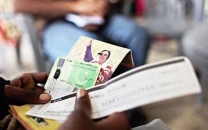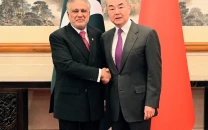Open online courses: Ready to be MOOCed?
Will online courses revolutionise education as we know it?

Open online courses: Ready to be MOOCed?
Understanding MOOCs
A MOOC, as the name suggests, is an online course targeting unrestricted and limitless participation via the internet. Additionally, it also helps build a vibrant online community of students, teachers and researchers for interactive discussions, which are in addition to the traditional course materials such as readings and problem sets. Participation can range from a few hundred to several thousand people engaged simultaneously.
Courses from leading Ivy League institutions such as Harvard, Stanford, MIT and Yale, taught by some of the most prominent names in academia are an example of what MOOCs offer. Almost all MOOCs are free and without any credit, except for those providing a certificate for which a nominal fee is charged. Traditional courses from universities, however, are charged, formally structured and credited. Even though there are no specific prerequisites to join a MOOC, they require the participants to stay up-to-date throughout the programme schedules.
The concept of online learning is fast picking up an audience, which is evident from the spike in enrollment numbers for MOOCs that have escalated from a million in 2012 to over 10 million as of date. The list of subjects offered through MOOCs is extensive, including everything from psychology to computer science to astronomy and history.
The primary components of MOOCs include video lectures, virtual group projects, peer-to-peer assessments and social meet-ups for students belonging to the same geographical area. Timings are flexible and a course can be taken at whatever time is best suited to the student. Moreover, some platforms, such as Coursera, have also added a further option of sub-titling and closed captioning for disabled students. While there is no substitute for live, person-to-person interaction between an instructor and a student, the structure and precision with which MOOCs are designed and delivered compensate for that missing element substantially.
There’s no such thing as a free lunch
Even though MOOCs have taken the world by storm, they have not been spared of criticism. The prime difficulty being faced by MOOC providers is to keep students engaged in online courses. According to research data gathered by Coursera, the course completion rate currently stands at a deplorable 10%. These statistics cast a doubt over the efficiency of a programme that is unable to sustain a major portion of the class.
Upholding academic integrity standards and receiving quality feedback is also problematic due to the massive size of the classes. There is also concern regarding misuse of content when courses uploaded online by professors are used by institutions in some cases as a proxy to traditional classes.
A recent study by Penn University also suggested that 80% of the MOOC users worldwide already have an advanced degree and belong to the upper income echelon — 80% of the students in Brazil, Russia, India, China and South Africa, the largest users of MOOCs, came from the richest six percent of the population, thereby defeating the idea of democratic reach and equal access to education for everyone.
Lack of accreditation for MOOCs is also another issue, as noted by UNESCO in its policy brief. It is important for external educational bodies to recognise and validate the courses in order to be formally recognised by universities and employers.
Is Pakistan ready to be MOOCed?
Most Pakistanis, who grew up during the good old PTV days, would have some recollection of the programmes aired on the channel from time to time, developed by the Allama Iqbal Open University (AIOU), teaching courses such as ‘silk worm farming’, ‘bee-keeping’ and even the famous ‘tractor ki daikh bhaal’ (looking after your tractor). We may not have realised at the time but this was our first encounter with the concept of an ‘open’ institution or ‘distance learning’. It is hence no surprise that AIOU is Asia’s first open university with a course enrollment rate of 3.3 million in 2011.
The potential for MOOCs is massive in the developing world since a huge part of the population cannot afford higher education at leading global institutions. However, one of the dilemmas that prevent it from being used to its maximum is the low rate of internet penetration in countries like Pakistan. Despite the technology boom, Pakistan has only achieved 16% internet penetration to date with a 15 million population online via mobile phone. Any drastic development on this front remains a distant dream as more than half of the country’s population lives below the poverty line. As a result, internet affordability remains an issue for a large segment of the country. While MOOCs may not be able to address plagues such as ghost schools, teacher absenteeism, political influence and lack of quality curriculum that haunt our local educational system, those who have access to the internet and are willing to embark on the journey can bypass these hurdles with the help of MOOCs.
In Pakistan, the Latif Ebrahim Jamal National Science Information Center (LEJ Center) serves as the focal center of the Virtual Education Project Pakistan (VEPP) that is led and supervised by Professor Atta-ur-Rahman, the former chairman of the HEC, in association with Professor M Iqbal Choudhary. The LEJ Centre at the University of Karachi has launched the ‘LEJ Knowledge Hub’, a MOOC platform that is helpful in finding the right courses and also integrates local content such as that developed by Virtual University. “This is probably the most exciting project that I have undertaken in my lifetime, as it can change the landscape of education in Pakistan and in other countries,” says Rahman.
Former information minister and senator, Javed Jabbar, who has also participated in content creation for Virtual University, echoes the same sentiment. “They [MOOCs] represent an enormous leap in expanding access to information, knowledge and education and reducing the vast disparities in the quality of professional capacity-building education that currently exists in Pakistan.” He emphasises that federal and provincial governments, the private sector and public-interest organisations in Pakistan need to enhance their respective levels of awareness of, and support for, MOOCs to make them more widely available to the public.
Cases such as that of Abdullah Ahmad, who works as a finance professional, bear testimony to the relevance of MOOCs for the average Joe. “When I was growing up and my family could hardly keep up with the tuition fee at Pakistani universities, Yale was so far away, it was not even a distant dream. But through a MOOC I enrolled in via Coursera, I was able to attend a course on financial markets conducted by their ace professor Robert J Shiller.”
Similarly, Muhammad Ali, a Karachi-based banker, was able to explore his love for astronomy through MOOCs. “I did not have the time to pursue my love for astronomy, as there were no institutions in Pakistan imparting cutting-edge knowledge on the subject and I didn’t know what I would do if I studied it,” he says. But technology has finally enabled him to study astronomy from institutions such as Duke and Princeton from the comfort of his home, for free. “I feel like I am already over the moon.”

MOOCs can also help raise the bar for education in Pakistan if they are made part of the university curriculum, states Dr Javed Leghari, also a former HEC chairman, in his opinion piece. Students should be registered for MOOC credit courses, classes should be arranged in a traditional classroom environment under tutor supervision and proctored exams and independendent quizzes administered by the university should be conducted in addition to the MOOC assessment. Currently though, Pakistanis have little choice when it comes to participating in MOOCs since many rely on video lectures on YouTube which is still completely banned in Pakistan.
A knowledge-based future?
While Pakistan is still struggling with the basics, there is plenty of innovation taking place in the MOOCs market globally. Recently, a UNESCO moot ended up experimenting with MOOCs on mobile phones, opening up a new dimension called MobiMOOC, which may be used to set up courses for a wide audience. The layout and media of MobiMOOC permits the use of regional languages and a variety of mobile and static devices, allowing the course format to be moulded according to a variety of regions.
Such advancements should be welcomed since knowledge sharing has always accelerated the progress of humankind. The continuous stream of learning traditions from the ancient and classical civilisations of Greece, Rome, China, India and Persia has immensely helped develop the world as we know it today. While the path that MOOCs seek is a lot more even in terms of access to academic resources, it is not completely devoid of potholes — the merits of conveyed knowledge versus a well-rounded education may continue to be debated for many years to come. But maybe that is just one more indication of how much we have yet to learn.
MOOCs development
MOOCs are a recent development in distance education which began to emerge in 2012. Below is a timeline of MOOC development.

In May 2013, a first ever MOOC-based Master degree programme was announced as collaboration between Georgia Institute of Technology and Udacity. This, however, isn’t free but comes at a price tag of $7,000.
MOOC major players
There is a lot of collaboration going on in the global market when it comes to MOOCs. Several universities and professors are currently engaged in offering online courses. While some colleges are starting their own initiatives, some are offering their courses through other platforms. Top names in the field are:

edX is a joint venture being run by Harvard, MIT and Berkeley. edX intends to add other university partners over the course of time and to make the platform open ware so that anyone can use it to provide MOOCs. edX is a non-profit entity with 2.5 million users and more than 200 courses being offered.
Coursera is a for-profit venture that provides a platform to universities and colleges to offer free courses. A percentage of any revenue that comes from ‘verified’ course participation at a nominal price and uses biometric and type-pattern recognition technology to identify students goes to Coursera. These ‘verified’ enrollments are issued an e-certificate upon successful recognition. Coursera has more than seven million users and works with 108 partners that include Yale and Johns Hopkins.
Udacity employs individual professors rather than working with universities and is able to attract renowned scholars. The focus of Udacity is in the field of computer sciences. Currently, it has 1.6 million users enrolled in 38 courses.
Khan Academy was established by an MIT graduate as a non-profit online library housing short tutorials but later attracted funding from Google and Melinda & Bill Gates Foundation. Khan Academy lectures have received more than 440 million views but it does not have any arrangement to provide material from universities and much of the content is related to secondary education.
Iversity is a multi-lingual platform which works with professors to provide free and open courses online. It intends to target one million users in 2014 with over 100 courses. Moreover, it allows anyone to upload a course and charge a nominal fee, which is later split with Iversity.
Adil Mulki works for a private bank and is interested in the outdoors, wildlife and science. He can be reached at vagabonds.odyssey@gmail.com
Adnan Rizvi is a banker and an investment analyst. He tweets @syedadnanrizvi
Published in The Express Tribune, Sunday Magazine, July 20th, 2014.



















COMMENTS
Comments are moderated and generally will be posted if they are on-topic and not abusive.
For more information, please see our Comments FAQ